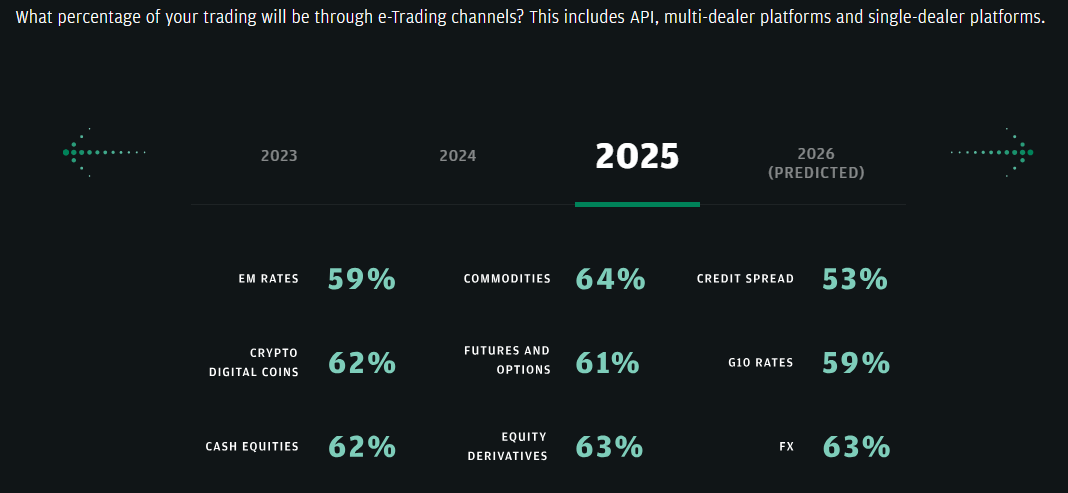| COINOTAG recommends • Exchange signup |
| 💹 Trade with pro tools |
| Fast execution, robust charts, clean risk controls. |
| 👉 Open account → |
| COINOTAG recommends • Exchange signup |
| 🚀 Smooth orders, clear control |
| Advanced order types and market depth in one view. |
| 👉 Create account → |
| COINOTAG recommends • Exchange signup |
| 📈 Clarity in volatile markets |
| Plan entries & exits, manage positions with discipline. |
| 👉 Sign up → |
| COINOTAG recommends • Exchange signup |
| ⚡ Speed, depth, reliability |
| Execute confidently when timing matters. |
| 👉 Open account → |
| COINOTAG recommends • Exchange signup |
| 🧭 A focused workflow for traders |
| Alerts, watchlists, and a repeatable process. |
| 👉 Get started → |
| COINOTAG recommends • Exchange signup |
| ✅ Data‑driven decisions |
| Focus on process—not noise. |
| 👉 Sign up → |
-
The ongoing impact of tariffs and inflation is set to shape the future of global markets, including the cryptocurrency sector, as indicated by JPMorgan Chase’s recent survey.
-
This research underscores the heightened anxiety among traders, revealing that inflation—once a secondary concern—is now at the forefront of investment strategies.
-
According to a COINOTAG source, “The interconnectedness of tariffs with inflation creates a ripple effect that is hard to predict, especially for volatile assets like cryptocurrencies.”
JPMorgan’s latest survey unveils how tariffs and inflation are primed to influence markets profoundly, causing heightened volatility concerns among traders.
Tariffs To Stir Market Uncertainty, JP Morgan Survey Says
In a recent series of trade policy announcements, US President Donald Trump’s administration has implemented significant tariffs, including a 25% tariff on imports from Mexico and Canada. Although an initial delay was agreed upon, the immediate impacts of these tariffs triggered pronounced volatility in both traditional and cryptocurrency markets.
The JPMorgan Chase survey revealed that 51% of institutional traders anticipate inflation and tariffs will emerge as the most impactful drivers of market dynamics in 2025. This observation comes on the heels of a year where inflation concerns accounted for only 27% of responses.

| COINOTAG recommends • Professional traders group |
| 💎 Join a professional trading community |
| Work with senior traders, research‑backed setups, and risk‑first frameworks. |
| 👉 Join the group → |
| COINOTAG recommends • Professional traders group |
| 📊 Transparent performance, real process |
| Spot strategies with documented months of triple‑digit runs during strong trends; futures plans use defined R:R and sizing. |
| 👉 Get access → |
| COINOTAG recommends • Professional traders group |
| 🧭 Research → Plan → Execute |
| Daily levels, watchlists, and post‑trade reviews to build consistency. |
| 👉 Join now → |
| COINOTAG recommends • Professional traders group |
| 🛡️ Risk comes first |
| Sizing methods, invalidation rules, and R‑multiples baked into every plan. |
| 👉 Start today → |
| COINOTAG recommends • Professional traders group |
| 🧠 Learn the “why” behind each trade |
| Live breakdowns, playbooks, and framework‑first education. |
| 👉 Join the group → |
| COINOTAG recommends • Professional traders group |
| 🚀 Insider • APEX • INNER CIRCLE |
| Choose the depth you need—tools, coaching, and member rooms. |
| 👉 Explore tiers → |
The return of tariffs is exacerbated by China’s counter-actions, notably a 10% tariff on US crude oil and agricultural machinery, which adds further unpredictability to an already volatile landscape. Critics of Trump’s tariff strategies argue that they risk accelerating inflation across various sectors, contributing to a fear of market instability.
Moreover, the report notes that a surprising 7% of traders now consider a potential recession as a minimal threat, down from 18% in 2024, indicating shifting attitudes in response to current policies.
| COINOTAG recommends • Exchange signup |
| 📈 Clear interface, precise orders |
| Sharp entries & exits with actionable alerts. |
| 👉 Create free account → |
| COINOTAG recommends • Exchange signup |
| 🧠 Smarter tools. Better decisions. |
| Depth analytics and risk features in one view. |
| 👉 Sign up → |
| COINOTAG recommends • Exchange signup |
| 🎯 Take control of entries & exits |
| Set alerts, define stops, execute consistently. |
| 👉 Open account → |
| COINOTAG recommends • Exchange signup |
| 🛠️ From idea to execution |
| Turn setups into plans with practical order types. |
| 👉 Join now → |
| COINOTAG recommends • Exchange signup |
| 📋 Trade your plan |
| Watchlists and routing that support focus. |
| 👉 Get started → |
| COINOTAG recommends • Exchange signup |
| 📊 Precision without the noise |
| Data‑first workflows for active traders. |
| 👉 Sign up → |
As electronic trading continues to expand, its role within emerging markets, such as cryptocurrencies, becomes increasingly significant. As outlined in the survey, electronic trading is expected to enhance efficiency and liquidity across all asset classes.

| COINOTAG recommends • Traders club |
| ⚡ Futures with discipline |
| Defined R:R, pre‑set invalidation, execution checklists. |
| 👉 Join the club → |
| COINOTAG recommends • Traders club |
| 🎯 Spot strategies that compound |
| Momentum & accumulation frameworks managed with clear risk. |
| 👉 Get access → |
| COINOTAG recommends • Traders club |
| 🏛️ APEX tier for serious traders |
| Deep dives, analyst Q&A, and accountability sprints. |
| 👉 Explore APEX → |
| COINOTAG recommends • Traders club |
| 📈 Real‑time market structure |
| Key levels, liquidity zones, and actionable context. |
| 👉 Join now → |
| COINOTAG recommends • Traders club |
| 🔔 Smart alerts, not noise |
| Context‑rich notifications tied to plans and risk—never hype. |
| 👉 Get access → |
| COINOTAG recommends • Traders club |
| 🤝 Peer review & coaching |
| Hands‑on feedback that sharpens execution and risk control. |
| 👉 Join the club → |
Volatility Remains a Core Concern
The survey’s findings point to rising concerns over market volatility, with 41% of traders highlighting this as their foremost issue for 2025, up from 28% the previous year. This new level of volatility stems from unexpected political and economic shifts rather than predictable market events.
“This year’s volatility is primarily fueled by ongoing geopolitical developments rather than traditional market triggers,” noted Eddie Wen, JPMorgan’s global head of digital markets. This modern volatility can lead to erratic trading behaviors, particularly impacting cryptocurrencies whose prices are sensitive to external news.
For instance, Bitcoin has responded sharply to news surrounding tariff adjustments, with its price rallying to a new peak following the delay in tariffs on Canada and Mexico. Moreover, XRP exhibited a substantial recovery aligned with similar political developments, illustrating the direct relationship between trade policies and digital asset performance.
However, these market dynamics also introduce fresh risks, particularly with retaliatory measures impacting the crypto landscape. As Michael Van De Poppe, a crypto trader, observed, “China’s actions introduce further uncertainty; the near-term trends will be heavily dictated by these external pressures.”
| COINOTAG recommends • Exchange signup |
| 📈 Clear control for futures |
| Sizing, stops, and scenario planning tools. |
| 👉 Open futures account → |
| COINOTAG recommends • Exchange signup |
| 🧩 Structure your futures trades |
| Define entries & exits with advanced orders. |
| 👉 Sign up → |
| COINOTAG recommends • Exchange signup |
| 🛡️ Control volatility |
| Automate alerts and manage positions with discipline. |
| 👉 Get started → |
| COINOTAG recommends • Exchange signup |
| ⚙️ Execution you can rely on |
| Fast routing and meaningful depth insights. |
| 👉 Create account → |
| COINOTAG recommends • Exchange signup |
| 📒 Plan. Execute. Review. |
| Frameworks for consistent decision‑making. |
| 👉 Join now → |
| COINOTAG recommends • Exchange signup |
| 🧩 Choose clarity over complexity |
| Actionable, pro‑grade tools—no fluff. |
| 👉 Open account → |
Glassnode recently analyzed how this Bitcoin cycle has diverged from historical trends, asserting that macroeconomic variables, including tariffs and inflation, now exert profound influence over market behaviors.
Conclusion
In conclusion, the interplay between tariffs and inflation is not merely a financial concern; it fundamentally reshapes the landscape for traders across diverse asset classes, including cryptocurrencies. As we move towards 2025, understanding these dynamics will be crucial for navigating potential market volatility. Future insights into economic policy will be imperative for sustaining market stability and growth.
| COINOTAG recommends • Members‑only research |
| 📌 Curated setups, clearly explained |
| Entry, invalidation, targets, and R:R defined before execution. |
| 👉 Get access → |
| COINOTAG recommends • Members‑only research |
| 🧠 Data‑led decision making |
| Technical + flow + context synthesized into actionable plans. |
| 👉 Join now → |
| COINOTAG recommends • Members‑only research |
| 🧱 Consistency over hype |
| Repeatable rules, realistic expectations, and a calmer mindset. |
| 👉 Get access → |
| COINOTAG recommends • Members‑only research |
| 🕒 Patience is an edge |
| Wait for confirmation and manage risk with checklists. |
| 👉 Join now → |
| COINOTAG recommends • Members‑only research |
| 💼 Professional mentorship |
| Guidance from seasoned traders and structured feedback loops. |
| 👉 Get access → |
| COINOTAG recommends • Members‑only research |
| 🧮 Track • Review • Improve |
| Documented PnL tracking and post‑mortems to accelerate learning. |
| 👉 Join now → |
| COINOTAG recommends • Members‑only research |
| 📌 Curated setups, clearly explained |
| Entry, invalidation, targets, and R:R defined before execution. |
| 👉 Get access → |
| COINOTAG recommends • Members‑only research |
| 🧠 Data‑led decision making |
| Technical + flow + context synthesized into actionable plans. |
| 👉 Join now → |
| COINOTAG recommends • Members‑only research |
| 🧱 Consistency over hype |
| Repeatable rules, realistic expectations, and a calmer mindset. |
| 👉 Get access → |
| COINOTAG recommends • Members‑only research |
| 🕒 Patience is an edge |
| Wait for confirmation and manage risk with checklists. |
| 👉 Join now → |
| COINOTAG recommends • Members‑only research |
| 💼 Professional mentorship |
| Guidance from seasoned traders and structured feedback loops. |
| 👉 Get access → |
| COINOTAG recommends • Members‑only research |
| 🧮 Track • Review • Improve |
| Documented PnL tracking and post‑mortems to accelerate learning. |
| 👉 Join now → |









